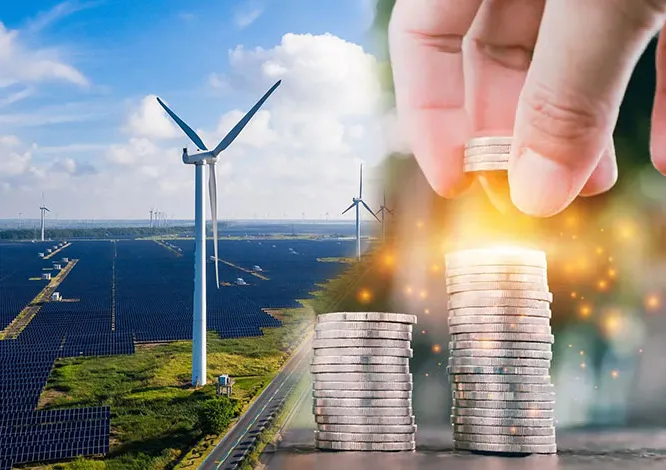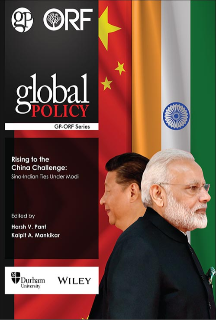
India plans to be a “developed” economy by 2047 even as it navigates the economic disruptions of the energy transition. To achieve this goal, India needs consistently higher levels of growth in national income to enhance the pool of investible capital—a crucial input into development.
High national income is a necessary but not a sufficient criterion to qualify as being a developed economy. In 2024, there are 83 high-income economies, each with a current per capita Gross National Income (GNI) of US$13,846, or more, calculated using the World Banks Atlas method. Only one-half figure in the top one-third of the SDG Index 2023—the United Nations comprehensive metric for development. The United States (US)—the largest economy in the world—is ranked at 33. China is at 63, Japan at 21, while India—a lower middle-income economy—is ranked 113.
The dual development metric
A dual metric applies to developed economies—figuring in the top one-third of the SDG Index and achieving close to high-income status. Electricity is the dominant energy source for the energy transition. The supply of clean, high-quality electricity at competitive rates will be a critical input into economic growth. We focus here on electricity rather than the more comprehensive metric of energy (which includes coal, solid biofuel, oil, and gas) for two reasons. First fossil fuels are on the decline. If developed economies, which largely determine global technology choices, are to become net zero in carbon emissions by 2050, fossil fuels must be substantially replaced with renewable electricity and green hydrogen. The latter is manufactured in electrolysers using enormous amounts of renewable electricity. By 2050, electricity could meet 41 percent of global energy consumption up from around 20 percent presently.
First fossil fuels are on the decline. If developed economies, which largely determine global technology choices, are to become net zero in carbon emissions by 2050, fossil fuels must be substantially replaced with renewable electricity and green hydrogen.
Second, significant benefits in technical energy efficiency accrue by switching from fossil fuels to electricity. For example, an electric induction cook stove is more energy efficient than cooking with gas. Similarly, electric vehicles are more energy efficient than petrol or diesel-fed internal combustion engine-powered vehicles. This feature makes the volume of electricity used in an economy a reasonable future proxy for high efficiency in energy use.
Electricity supply is expected to surge even as aggregate energy consumption declines
Per the International Energy Agency projections, global energy supply (all sources) over the period 2022 to 2050 declines by 19 percent as energy efficiency efforts kick in. Global electricity supply, during the same period, is set to increase by 130 percent as energy end-use equipment and appliances increasingly rely on electricity. The US, the EU, and Japan follow this trend of electrification with increases of 101 percent, 85 percent, and 28 percent together with reduced aggregate energy use, respectively, of 32 percent (US and EU) and 18 percent in Japan. In China, electrification is set to increase by 95 percent even as energy use declines by 9 percent. In India, which is currently energy-use deficient due to low incomes, the energy supply over this period, will increase by 22 percent while electricity supply will jump by 274 percent, due largely to additional renewable electricity capacity.
India’s per capita electricity supply is a fraction of rich economy levels
Despite this steep growth in India of electricity supply by 2050, because of a low-base level, the per capita supply of electricity at 3950 kWh in 2050 remains less than just one-sixth of the US and less than one-third of Japan, the EU, and China. This gap between India and leading economies, despite energy efficiency programs in developed economies compressing demand to achieve net-zero carbon emissions, raises a red flag about whether our infrastructure projections are aligned with becoming a developed country by 2047.
Despite this steep growth in India of electricity supply by 2050, because of a low-base level, the per capita supply of electricity at 3950 kWh in 2050 remains less than just one-sixth of the US and less than one-third of Japan, the EU, and China.
It can be argued that the leading economies have the disadvantage of embedded energy-intensive built structures and lifestyles which we can avoid because more than half of the future India is yet to be built. It is true that we can build low-energy intensity infrastructure—public before private transport, transport-oriented development, vertical development, diversified neighborhoods, and passive cooling structures. However, this transformation in building materials, designs, or city planning is not visible yet. Given the decentralised governance arrangements for regulating construction and the absence of a central coordinating agency, more time will be needed for field-level changes to be realised.
Aligning electricity supply projections with high-growth aspirations
Nevertheless, the massive gap in per capita electricity supply between India and the leading economies cannot be fully explained by the drag of inherited high energy intensity. We appear not to be planning for a significant increase in national income judging from the tepid targets for electricity demand. Consider that the CEA estimate for generation in 2030 (the furthest projection available) is 2400 TWh (IEA estimates it at 2672 TWh). Compare this with China’s generation two decades earlier in 2010 of 4200 TWh when its per capita current GDP was only US$4,550 versus US$12,720 in 2022 and it is still not a high-income economy.
Aiming to remain low-energy intensity, whilst simultaneously hoping to grow the GDP rapidly might end up perpetuating the existing dualism in energy access. Presently, elite homes get first-world service at third-world tariff, whilst the bulk of the population gets by on subsistence levels of nearly free energy. Industry suffers the crippling burden of a cross subsidy-based quasi-tax, despite which utility operational costs (without a return on the capital employed) remain unrecovered from the retail supply. In FY 2022, these under-recoveries amounted to INR 1.4 trillion (about 0.6 percent of current GDP) borne by state government subsidy payments, which reduces their capacity for development.
Elite homes get first-world service at third-world tariff, whilst the bulk of the population gets by on subsistence levels of nearly free energy.
This sub-optimal development strategy is reflected in asymmetric growth. Higher but concentrated GDP growth, limited to a part of the formal economy sustains less than one-fifth of the workforce. Stagnating or low growth in the sunset sectors (agriculture, small industry, and micro-enterprise) negatively impacts the bulk of the workforce. Well-paid government employment remains the elusive carrot, which keeps alive individual hopes of a better future.
Public finance intensive investments
A series of systemic distortions are sapping India’s fiscal resources beyond the expansive welfare programmes. There is increasing reliance on the balance sheet of state-owned enterprises to guarantee payments to clean electricity generators, implement demonstration projects for clean technologies and provide free transmission access to clean energy. Add to this, the burden of financial incentives for industrial production schemes to generate new, good jobs in manufacturing, and the fiscal stance becomes misaligned with the available resources.
Fiscal instability or low economic growth can constrain investments
Implementing the energy transition is highly capital-intensive, estimated to cost at least about 0.5 percent of GDP for the next quarter century and possibly beyond. The finances of the Union government are already overstretched by about 2 percent of GDP due to excess borrowing. Till the consequential excessive debt is pared down to within the norm, expenditure outlays need to be structured with an eye on fiscal stability. Inflation has been higher than the norm of 4 percent since 2005, barring two years 2017 and 2018 of economic dislocation and demand compression post demonetisation.
The burden of financial incentives for industrial production schemes to generate new, good jobs in manufacturing, and the fiscal stance becomes misaligned with the available resources.
Governance initiatives
Beyond the fiscal constraint, energy transition requires a joined-up strategy to target potential technologies at the laboratory/demonstration stage for development or technology transfer. There is a need to free-up underused high potential renewable energy sites for new investment and to build a resilient, digitally managed, integrated, transmission and distribution grid to support liquid markets in bulk electricity and novel retail demand servicing. Steering the energy transition is a full-time job—negotiating with state governments and navigating fiscal constraints with least-cost, innovative options. Leaving it to the pulls and pressures of ministerial silos risks a sub-optimal, high-cost response. This would be unaffordable.
Sanjeev Ahluwalia is an Advisor at the Observer Research Foundation.
The views expressed above belong to the author(s). ORF research and analyses now available on Telegram! Click here to access our curated content — blogs, longforms and interviews.




 PREV
PREV


